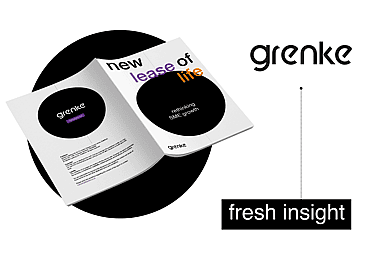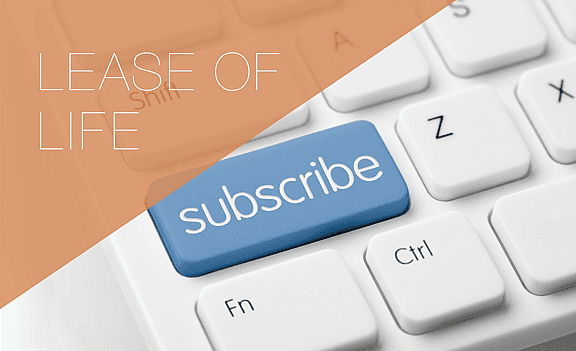When was the last time you signed up to a subscription?
Was it for a streaming service? A ready supply of groceries? Or was it a coffee gift box, with new flavours every month?
From entertainment streaming to personal grooming, subscription models have firmly established themselves as an alternative way to consume. In fact, research from Ofcom has found that two-thirds of UK homes are signed up to subscription services, with an average of seven contracts per household.
And businesses are responding to that change to increasingly offer subscription-based payment models. According to The Subscription Economy Index, the subscription economy has grown by 435% over the last decade.
What’s motivating that change?
On the one hand, people are seeking easier and more streamlined experiences. On the other, businesses want to improve their cash flow in an increasingly unstable economic landscape.
Let’s explore how the subscription mentality is helping businesses meet the needs of their customers, and how it can work for you.
What does the subscription mentality look like?
The subscription model has likely become popular as a response to changing consumer habits. Shoppers are looking for ease, and subscription models that can set up automatic deliveries or provide a single platform with a whole suite of content are a convenient answer.
It also helps avoids the problem of choice paralysis, where a whole market of options can start to feel overwhelming to the consumer who’s already strapped for time.
For businesses, responding to this rising demand for ease and a personalised service means focusing on customer retention over customer acquisition. After all, the goal of subscription models is to maintain customer relationships and keep people coming back for more. The steady income from repeat purchases is far better than the uncertainty of one-off purchases.
This mindset is encouraging businesses to look for ways to adopt new ways of working to stand out from their competitors. How can adopting a subscription mindset help you rise to the challenge?
The crucial difference to your bottom line
In our new report, ‘Lease of Life: The Economic Benefits of Equipment Leasing in the UK’, we explored the impact of Leasing on businesses, and the UK economy as a whole.
We found that the uptake of flexible financing is helping businesses, particularly SMEs, reach their growth ambitions. We found that nearly a quarter of SMEs are meeting their financial needs through Leasing, with 28% saying it played a critical role in avoiding capital expenditure on equipment, and 24% saying it helps them manage business cash flow.
By enabling these businesses to stay agile and better budget for new asset investments, we found that Leasing is estimated to provide nearly £1 billion per annum boost to the UK’s Gross Value Added.
That’s because, just as consumers are looking for an easier way to shop, businesses need easier ways to finance their equipment. In a time of unprecedented economic strain, outright purchasing just isn’t viable for many businesses anymore.
From our research, we found that 52% of SMEs are financing their investments through credit cards – an expensive method with the added risk of overdraft charges and high-interest rates.
Being able to spread the cost of a new asset into smaller monthly payments with Leasing allows you to get the equipment you need without the burden of a hefty upfront cost. This means you can provide the same competitive service with financing you can manage.
In the words of Paul Bond, Branch Leader of grenke Manchester, "You wouldn’t take on a new employee and pay them their salary for 5 years on their first day! Assets, just like people, are there to do a job.”
So why not make your assets work harder for you?
A new era of flexibility
The world is changing at an incredibly fast pace. New tech innovation is coming thick and fast, and keeping up will mean ensuring you are equipped with the latest tools and assets to power your business.
Take the photocopier, for example. A staple of the productive office, it’s been around since the 1960s. But it’s transformed since then, with added compatibility with formats, touchscreens, and new software solutions. Nowadays, cloud-based storage and real-time synchronised document management is transforming the technology again.
This can make the investment landscape intimidating. How can you confidently invest in a new asset if there’s chance it will already be obsolete in just a few years?
At grenke, we provide the flexibility for you to upgrade your equipment as technology evolves, ensuring you can stay competitive in a dynamic market. And Leasing means you don’t have the hassle of asset ownership, meaning you’re free to upgrade at the time that works for you.
This kind of agility is likely why, on average, SMEs attribute 23.5% of their business profitability to Leasing, according to our research.
We know that upfront costs are a burden, so we provide an alternative route to success that means you can invest for the long term. It’s why many of our partners have been with us for over ten years.
Because businesses will need to be flexible to thrive in 2024 and beyond. Just as consumers have adapted to a new way of shopping, businesses need to evolve too. And Leasing is here to help make that evolution manageable.
So what are you waiting for? You can read our research into the impact of Leasing on the UK economy here.
And learn more about what grenke can do to support your business flexibility by exploring our website today.


